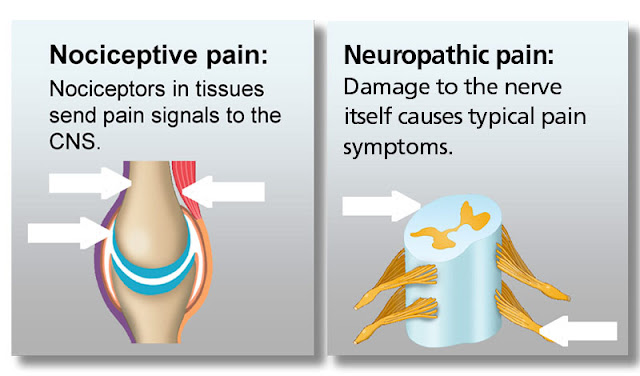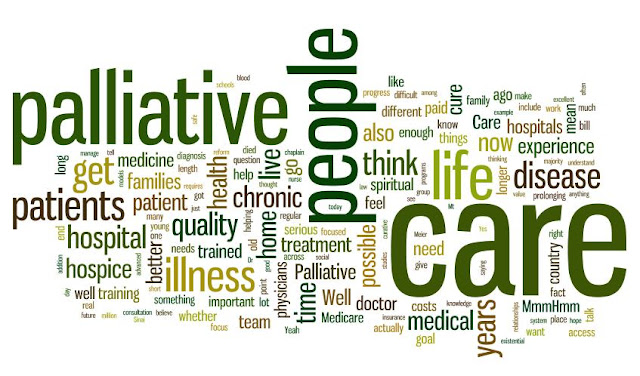Tweet
Chronic pain: Pain that lasts more than six months due to non-life threatening causes and has responded to current available treatment methods.
Pain is one of the distressing symptoms in any disease. Effective pain assessment is mandatory for the management of Pain. Pain can affect almost all the spheres of life of patients. Moreover, increase in pain status can badly affect the Quality Of Life (QOL) of patients. Pain assessment is carried out on the first visit to the Palliative Care Centre, before administering pain medication, during pain management process and after the management of pain. Pain assessment should be an ongoing process. It is always better to learn about pain assessment whoever is in direct contact with the patient for rendering palliative care. A basic understanding of pain is helpful for volunteers too, because they are also an inevitable member of Palliative Care Team.
Terminologies in Pain
Pain: It is an unpleasant sensory and emotional experience
associated with actual or potential tissue damage, or described in terms of
such damage.
Acute pain: Pain that has a sudden onset and commonly declines over a short time
Chronic pain: Pain that lasts more than six months due to non-life threatening causes and has responded to current available treatment methods.
Neuropathic pain: Pain initiated or caused
by a primary lesion or disease in the somatosensory nervous system.
Nociceptive pain: Represents the normal response
to noxious insult or injury of tissues such as skin, muscles, visceral organs,
joints, tendons, or bones.
Somatic Pain: It is described as musculoskeletal pain.
Visceral Pain: It results from the activation of nociceptors of the thoracic, pelvic and abdominal viscera(organ).
Breakthrough pain: Intermittent exacerbations of pain that can occur spontaneously or in relation to specific activity.
Allodynia: A condition in which a non painful stimulus felt as pain in spite of normal appearing tissue.
Adjuvant Analgesics: A number of drug class whose usual primary role
is other than the relief of pain are used in pain management.
Classifications of Pain
Pain is classified on the basis of duration and cause.
Duration: Acute and Chronic
Cause: Nociceptive Pain and Neuropathic Pain
Nociceptive is again classified in to Somatic Pain and Visceral Pain.
Somatic Pain
Visceral Pain
Pain is classified on the basis of duration and cause.
Duration: Acute and Chronic
Cause: Nociceptive Pain and Neuropathic Pain
 |
| Types of Pain |
Somatic Pain
- Stimulation of peripheral receptors (Skin, muscles, bone, connective tissue).
- Clearly localized – patients can point the spot of pain.
- Aching or gnawing.
- Responds to simple analgesics, reasonably opioid sensitive.
- Infiltration, compression, distension of thoracic or abdominal organs.
- Vague location.
- Deep, squeezing, pressure, discomfort, soreness, deep ache in nature.
- May involve referred pain syndromes.
- May be associated with nausea or vomiting.
- Very opioid responsive.
Neuropathic Pain
- Abnormal conduction, excessive electrical discharge from damaged nerves
- Example: injury from surgery, radiotherapy, chemotherapy, cancer infiltration, other diseases.
- Usually it is Under-diagnosed
- Relatively opioid resistant – need combination therapy with adjuvants
- Lancinating, sharp, shooting, flashing in nature.
- Usually follows a clear nerve distribution
Pain is what the patient says it is
The most common method that used in pain assessment is 'OPQRST' method which is used world wide.
Onset: When it was started?
Was the onset of pain sudden or it developed gradually?
Was the onset of pain sudden or it developed gradually?
Palliative Factors: What gives you pain relief ?
Are you taking remedies for pain ? Medication, any other therapy?
Are you taking remedies for pain ? Medication, any other therapy?
Provoking Factors: What are the some aggravating factors for your pain?
What causes your pain worse?
What causes your pain worse?
Quality of Pain: Describe about your pain? Nature of your pain?
Example: Aching, sore, cramping, pounding, sharp, throbbing, dull, nagging, penetrating, shooting, numb, tingling, spasm, burning, gnawing, pressure-like, radiating, stabbing, tingling, tender, knife-like
Example: Aching, sore, cramping, pounding, sharp, throbbing, dull, nagging, penetrating, shooting, numb, tingling, spasm, burning, gnawing, pressure-like, radiating, stabbing, tingling, tender, knife-like
Radiation: Does your pain radiates to other parts of the body?
Does your pain spread to other parts?
Does your pain spread to other parts?
Site: Use of a body chart will help the person who is assessing pain and it is to communicate with other team members about patients level of pain.
Where exactly you have pain?
Can you show me where you are feeling pain?
Do you have pain all over body?
Do you have pain in a particular area of body?
Can you shade the area of pain in the diagram with respect your body pain?
Where exactly you have pain?
Can you show me where you are feeling pain?
Do you have pain all over body?
Do you have pain in a particular area of body?
Can you shade the area of pain in the diagram with respect your body pain?
 |
| Body Chart for Pain Assessment |
Severity: Asking about the severity of pain is quite challenging. Use of a Numerical Pain Rating Scale (NPR Scale) will ease the work. On a scale '0' means no pain and '10' means worst imaginable pain. Severity increases as it moves from '1' to '10 '. A proper explanation is needed before applying it. For example, a simple explanation about the purpose of the using NPR Scale to the patients, family member and care giver.
Another method , ask about the severity as Mild, Moderate and Severe, which almost all the patients can respond to it with out any confusion.
Another method , ask about the severity as Mild, Moderate and Severe, which almost all the patients can respond to it with out any confusion.
Reminder: Pain experience varies from patients to patients.
 |
| Numerical Pain Rating Scale |
Wong-Baker FACES Pain rating scale is used to measure severity of pain for children. Usually 3 years and above.
Check the severity of pain at rest, after taking medication, on movement.
Time: Ask the patients , Pain is throughout day and night?
Level of pain during day and night?
Duration of pain
Pain relief with medication?
Need of breakthrough dose?
Never forget to ask the patients about the Activities of Daily Living.
There will be some circumstances where the pain assessment is challenging , for example, patients with communication issues. In that case, take the help of family members, friends or other care givers who knows the patient better.
Level of pain during day and night?
Duration of pain
Pain relief with medication?
Need of breakthrough dose?
Never forget to ask the patients about the Activities of Daily Living.
There will be some circumstances where the pain assessment is challenging , for example, patients with communication issues. In that case, take the help of family members, friends or other care givers who knows the patient better.
Download: Pain Assessment Guide
Are you looking for a Pain Management Centre in Kerala ? Find the links below

